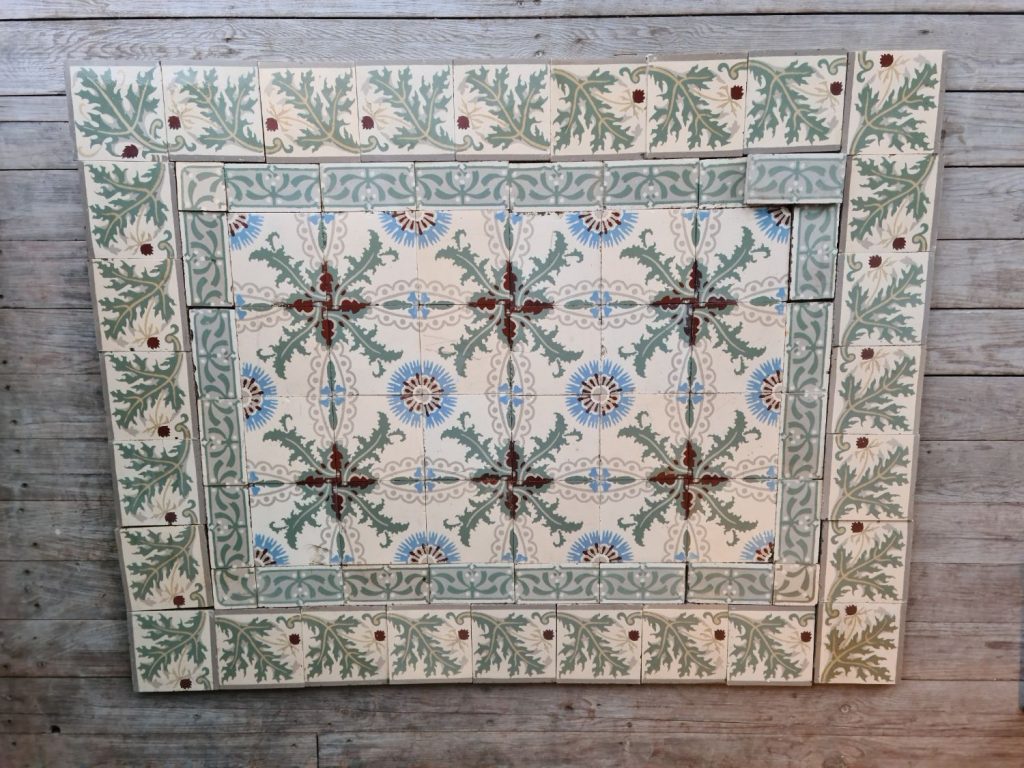The first patterned Belgian floor tiles (1860) had motifs that were easy to produce, yet ingenious. Most patterns consisted of rectangles, squares, diamonds, circles and polygons.
Floor tiles with floral motifs were rarely made in the early days because of the cost price and complexity. It was only later (1880-1890) that they were added to the catalogues.
Photo: The vegetal theme of thistles and cornflowers was used regularly throughout the Art- Nouveau period.
Source: Mario Baeck


Just like in all other art forms, we see the styles evolve from neoclassical, neo-gothic and neo-renaissance to the more outspoken Art Nouveau. The patterns ranged from geometric motifs to elegant floral motifs. The pattern tiles were designed by studio’s or prominent artists (painters, sculptors, etc.).
After the 1st world war, the production of Art Nouveau tiles started up again, gradually Art-Deco tiles were also included in the trade catalogues. But the financial crisis of the 1930’s brought an end to the production of the encaustic Belgian floor tiles. As a result Art-Deco tiles are rather rare.
Source: Mario Baeck
